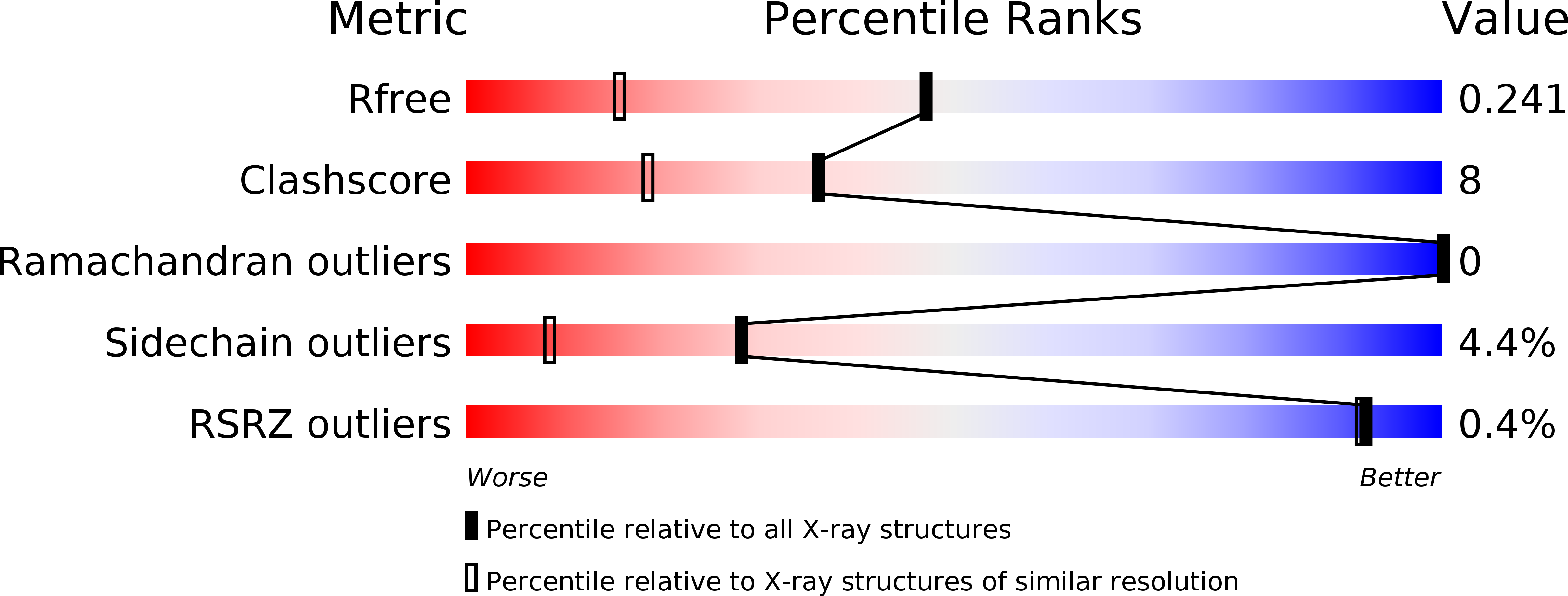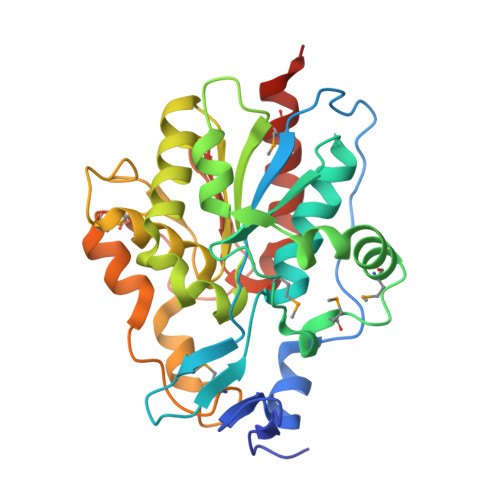The 1.6A Crystal Structure of the Class of Chaperone Represented by Escherichia coli Hsp31 Reveals a Putative Catalytic Triad
Quigley, P.M., Korotkov, K., Baneyx, F., Hol, W.G.J.(2003) Proc Natl Acad Sci U S A 100: 3137-3142
- PubMed: 12621151
- DOI: https://doi.org/10.1073/pnas.0530312100
- Primary Citation of Related Structures:
1N57 - PubMed Abstract:
Heat shock proteins (Hsps) play essential protective roles under stress conditions by preventing the formation of protein aggregates and degrading misfolded proteins. EcHsp31, the yedU (hchA) gene product, is a representative member of a family of chaperones that alleviates protein misfolding by interacting with early unfolding intermediates. The 1.6-A crystal structure of the EcHsp31 dimer reveals a system of hydrophobic patches, canyons, and grooves, which may stabilize partially unfolded substrate. The presence of a well conserved, yet buried, triad in each two-domain subunit suggests a still unproven hydrolytic function of the protein. A flexible extended linker between the A and P domains may play a role in conformational flexibility and substrate binding. The alpha-beta sandwich of the EcHsp31 monomer shows structural similarity to PhPI, a protease belonging to the DJ-1 superfamily. The structure-guided sequence alignment indicates that Hsp31 homologs can be divided in three classes based on variations in the P domain that dramatically affect both oligomerization and catalytic triad formation.
Organizational Affiliation:
Biomolecular Structure Center, P.O. Box 357742, University of Washington, Seattle, WA 98195, USA. paulene@u.washington.edu
















